Disclosure: Meeple Mountain received a free copy of this product in exchange for an honest, unbiased review. This review is not intended to be an endorsement.
At SPIEL ‘22, I ran into designer Tim Fowers, the man behind what I believe is the greatest cooperative game ever made, Burgle Bros. He had a new game up his sleeve, Paperback Adventures (2022, Fowers Games), with final production copies ready to hand out to hungry tabletop media members like me.
“Hey, if it’s not your thing, all good,” Tim said. “But I think you’ll like this one.”
Tim: you were right. I do like this one.
Gamers: if you love Scrabble (or any word games, really, like the upcoming Illiterati), deck-building games like Clank!, a good boss battler like Kingdom Death: Monster, solo gaming, and a good challenge, do I have a game for you!!!
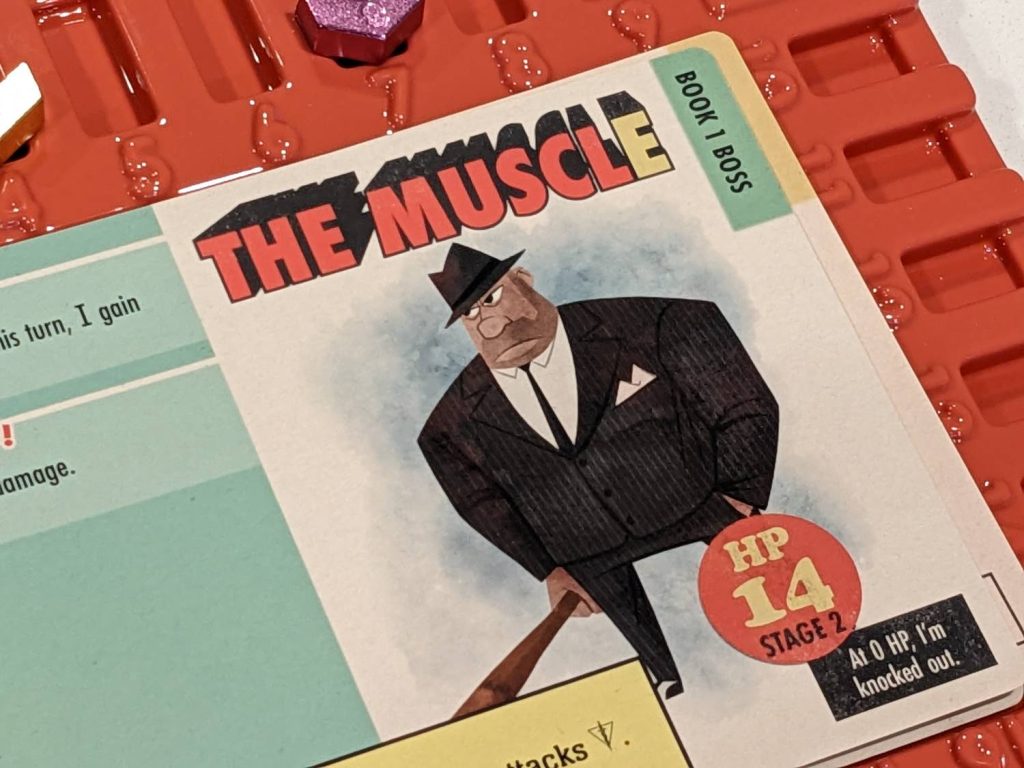
Put Your Spelling Hats On
Paperback Adventures (designed by Fowers and Skye Larsen) feels quite a bit like last year’s Final Girl in one critical area. Both games embrace the concept of buying a reasonably-priced “core box” that has most of what you need to play each game, then buying individual scenario or character boxes that allow for a player to attack as much or as little content as they would like.
Paperback Adventures launches with three options for the character boxes: Damsel, Ex Machina, and Plothook, all “written” by the fictional author Paige Turner. For this review, I played multiple games of both Ex Machina and Plothook.
No matter which character you choose, your goal is always the same: defeat six opponents, which will always be three lackeys and three bosses. Both you and the opponents have a set number of hit points/health, and the goal is to knock out each opponent one at a time. Between rounds, health persists, so you’ll have to find a way to stay strong enough to work through a large pile of evil characters bent on your demise. But each round comes with rewards as you build up your character’s deck of cards, items and McGuffins (special powers) to take on progressively more difficult foes.
Turns in Paperback Adventures rely on some of the standards in a deck-building game experience. A deck of 60 cards, known as the Library, are available in each game. 10 of those 60 cards make up your starting deck, and each card in the Library is a single letter. Drawing four cards each round, you’ll have to make a word with those letters as long as that word is not a proper noun.
Every turn, you’ll also have access to a wild card, which can be any letter you’d like. If you don’t use that card, you’ll get a small bonus in resources that can be used in future turns. In this way, you will almost always be able to build at least a two-letter word to attack an opponent with your words.
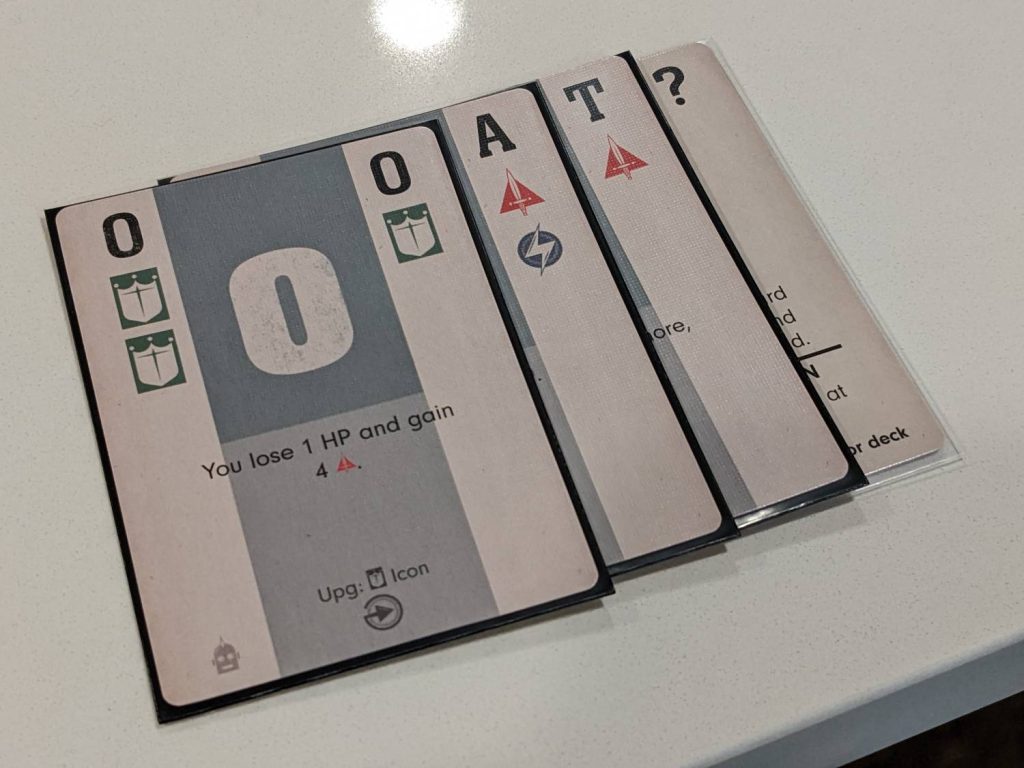
S-P-L-A-Y
So, you’ve got your hand of cards. The cards can be used in two different ways, as long as you understand how to “splay” cards.
Like the game Innovation, splaying cards is just a way to describe how you are displaying cards from left to right (or right to left) while showing the symbols on one of the two card edges. In Paperback Adventures, you’ll need to decide what you’ll want to do each turn: mostly play offense, or mostly play defense.
I say mostly because each card’s icons align with using attack points or defense points. If you splay your letter cards to the right, you are usually playing a majority of attack icons. Splay left, and you’ll usually be playing defense cards. This also determines which letter card is on top of your stack, because the text on that card is the power you will get for that single turn.
The card on top also gets “fatigued”, game lingo for “this card is no longer available for the rest of this boss/lackey fight.” So, your deck is slowly shrinking each boss fight (Gloomhaven, anyone?) and you’ve got a word puzzle to solve: now that I’m down a T, or an E, or a B, will that make forming future words too difficult?
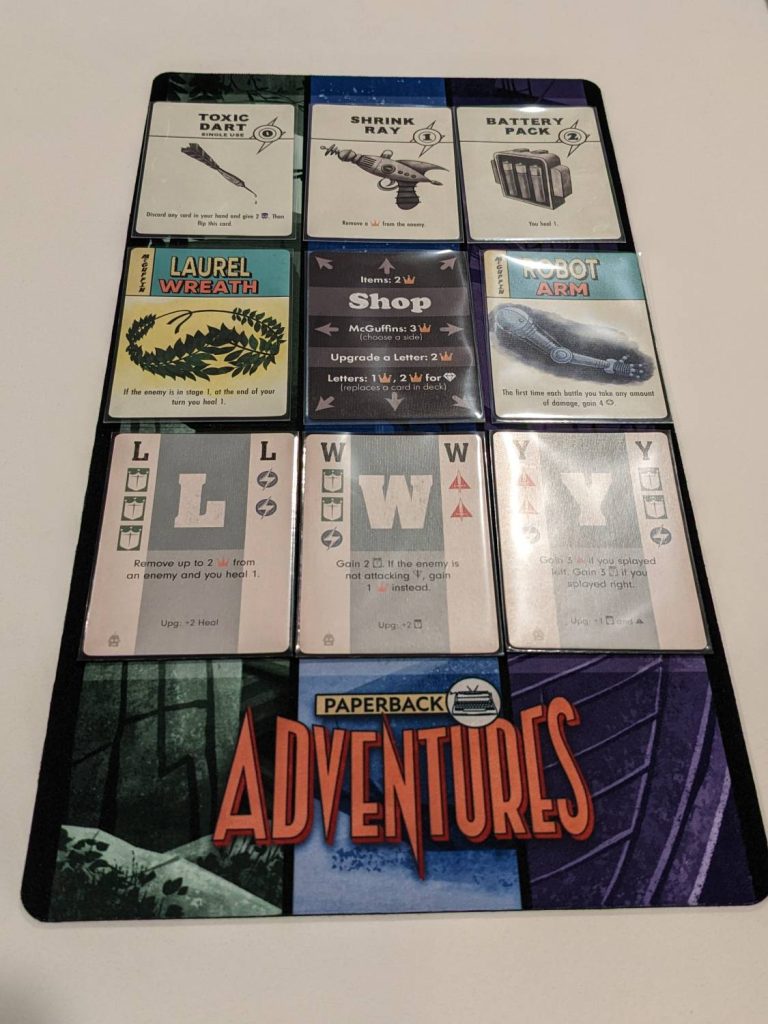
The splaying of cards, deciding which cards to fatigue, and building words that will defeat enemies when the clock is winding down is the heart of what makes Paperback Adventures such a winner. Coming up with a great word that takes advantage of a power that knocks out a lackey just before you get knocked out of the game is quite a moment, and there are lots of those moments every game.
I’m not necessarily a word game lover or a Scrabble pro or even a guy who loves solo gaming experiences. But Paperback Adventures puts all of its eggs in a basket I want to carry, so it landed well for me.
That does not mean it’s perfect.
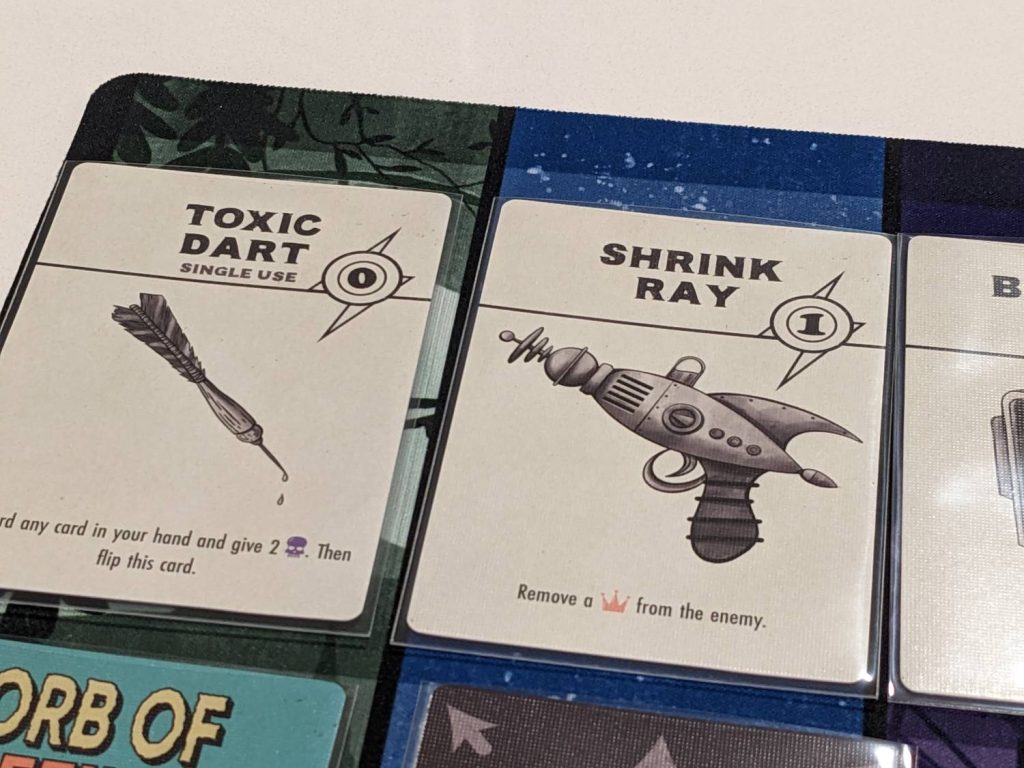
T-I-M-E
The main negative I had with my experiences playing Paperback Adventures were tied to the time involved. Frankly, it’s a long sit.
Much like classic video game bosses, Paperback Adventures asks you to beat down a boss not just once, but twice. Literally. Each lackey and boss card is double sided, so you’ll have to knock out the front side version of the boss to stun that enemy before flipping the boss over and beating that same boss with a slight adjustment to their powers and hit points. That means that you really have 12 fights to work through.
The fights, individually, can be quite thrilling. But each of my plays took over two hours, which is a bit long. (Some players will love sitting through each one of these for that long or longer, particularly if you are struggling to build the perfect words.)
I wish Paperback Adventures featured either less fights or the same number of fights but only on one side of their cards to defeat. Certainly, you can work around this by house-ruling some elements of the game, or just committing to playing through half of the game at a time. Still, I thought portions of each game became an exercise instead of focusing on the fun elements of building works and utilizing your powers to build cool combinations.

Y-E-S-S-I-R
Paperback Adventures, a sequel to 2014’s Paperback, is a very well-produced solo adventure that has a very specific audience. If you are that audience, this is an instant buy.
I have to call out a few other things about the game here. The art by frequent Fowers collaborator Ryan Goldsberry is once again top-notch. Paired with the pulpy writing style on the cards and the included card sleeves, Paperback Adventures feels like other Fowers productions (both Burgle Bros. games and Sabotage) in that you are paying for a great game and you will feel good about the dollars dropped.
The rules are…OK here. They are long, but more importantly, it feels like you’ll need to constantly refer back to them, particularly with some of the minutiae in terms of game steps, splaying cards, and each character’s unique abilities. These won’t fit on a player aid, and the rulebook is average.
The depth of gameplay here is fantastic, and I think many players will be able to get away with just the core box and one of the three character boxes. However, if you decide on adding all three characters at once, you can mix and match many of the items and McGuffin cards into a single deck, creating a buffet of cool options that will change your playstyle each game. There is a two-player variant that I did not try for this review, but that option is included for a twosome looking for a fun ride through a word game adventure.
With Paperback Adventures, Tim Fowers does it again! I’m already excited to try future characters in this system.






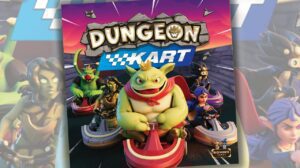




Nice review, thank you. Found a typo – your reference at the end correctly credits Ryan Goldsberry, but within the review you refer to them as Kirk Goldsberry.
Good catch, thank you. Fixed.